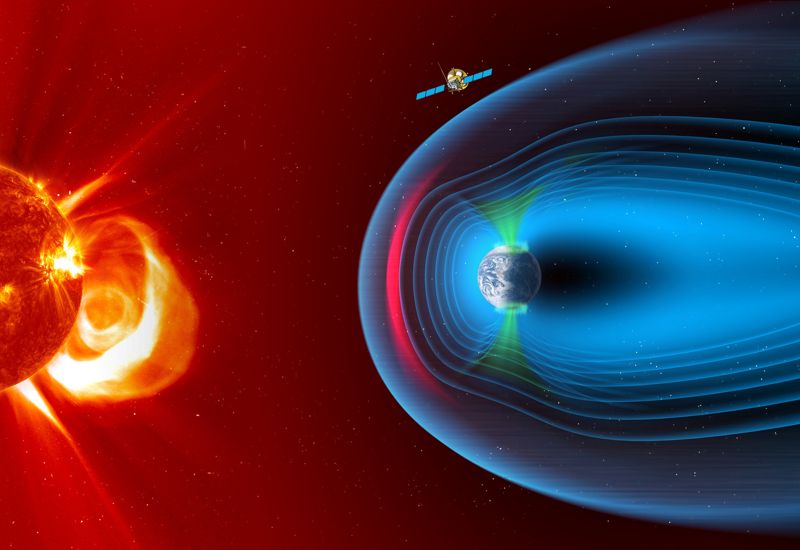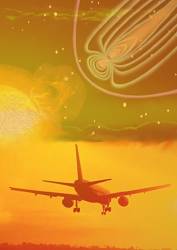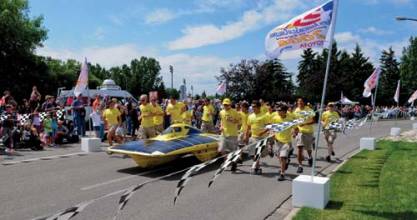Airbus has been selected by the European Space Agency (ESA) to build the European component of the SMILE satellite (Solar wind Magnetosphere Ionosphere Link Explorer). SMILE will be the first joint satellite mission between ESA and the Chinese Academy of Sciences (CAS), following on from the success of the Double Star / Tan Ce mission which flew between 2003 and 2008.
The objective of SMILE is to study and understand space weather. Specifically, it will look at the physics behind continuous interaction between particles in the solar wind and Earth’s magnetosphere, the magnetic shield that protects the existence of life in our planet.
The mission is now entering a four-year period of manufacturing, testing, and integration of the payload module and the platform, according to a press release on the Airbus website. In launch configuration these two components will form a 3.15-meter-high stack.
The spacecraft will have a mass of 2,200 kilograms and will travel in a highly elliptical orbit around the Earth. Its perigee will be at a distance of 5,000 kilometers (from where it will download data to the Troll ground station in Antarctica and the CAS ground station in Sanya, China), while the apogee will be as far as 121,000 kilometers (this is almost one third the distance to the Moon). At this vantage point the satellite will have a prolonged view of the Earth’s northern polar regions, to enable the boundary of the Earth’s magnetic field and the Northern Lights, or aurora borealis, to be imaged.
The payload module will be built at the Airbus site in Madrid, Spain, where the instruments will be integrated. The platform will be built in Shanghai, China. Both, the payload module and the platform will be integrated and tested at ESA’s European Space Research and Technology Centre facilities by a multinational team.
The science payload consists of four instruments. The Soft X-ray Imager will obtain unique measurements of the regions where the solar wind impacts the magnetosphere. The Ultra-Violet Imager will study the global distribution of the auroras. The Light Ion Analyzer will measure the energetic particles in the solar wind. And finally the Magnetometer will assess changes in the local magnetic field, Airbus stated.
“Today, we are able to predict the weather on Earth, now it’s SMILE’s turn to help us understand space weather around the Earth and who knows…, probably one day, we will have enough data to be able to forecast dangerous solar storms that could disrupt our systems in space and on the ground,” said Fernando Varela, Head of Airbus Space Systems in Spain. “We thank the Spanish Administration for their decisive and continued support to scientific missions.”
Other ESA missions, built by Airbus, such as Cluster which studied the Earth’s magnetosphere, and SOHO which studied the sun, have already improved understanding of space weather.
Under the current plans, the spacecraft will be launched by a European Vega-C or Ariane 62 rocket in 2023.






